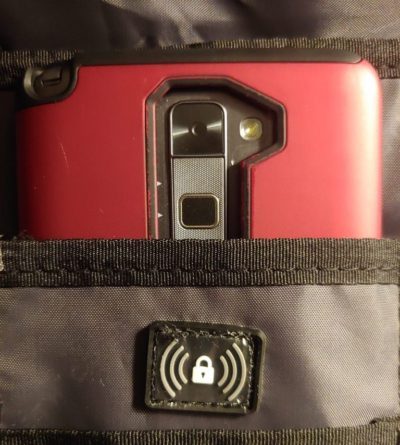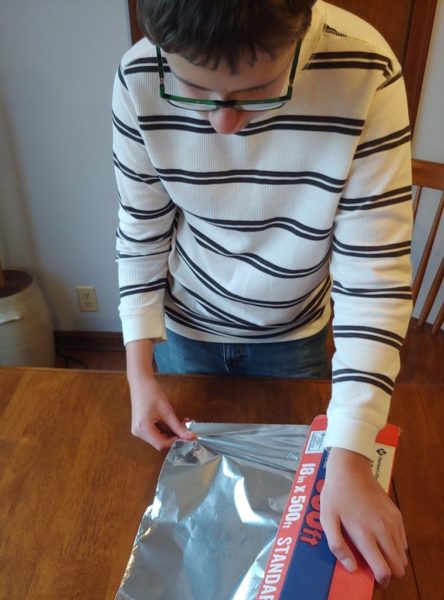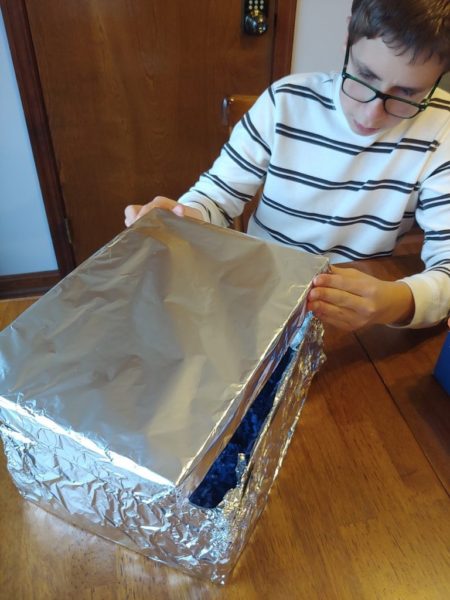The science teacher in me started asking questions about RFID (Radio Frequency Identification) protection. I did some research because I wanted to know more. What was RFID? How did it work? Is it necessary to replace non-RFID luggage accessories? You might better understand our science lab if you read our post: What is RFID Protection and Do We Need It?

Lab Supplies
Foil (or other metal)
Cell Phone 1
Phone 2 (Cell or Landline for calling cell phone used for lab)
What is RFID?
RFID, an acronym for Radio Frequency Identification, is the use of radio waves to read information stored on a tag. It can be read from a distance and doesn’t need to be physically touched in anyway. RFID shielded luggage and accessories prevent thieves from skimming and gaining access to private information and documents.
Advertisements boast that their RFID accessories are shielded with copper and nickel. If RFID blocking material is made from metal – can I secure or shield my own information? Andrew caught on to this science question rather fast and I could see I had his interest. We decided our question at hand for this science lab was, “Can we create a science lab that will prove that metals will block radio waves?”

Choosing a Metal
Our first step was to discuss metals and find something that might possibly work. Obviously, metals, like copper and nickel, repel radio frequency identification waves, or manufacturers would state that their luggage has such state of the art, right? But, alas, copper is a bit expensive for the budget, so we turned to a common household item – aluminum foil. Could foil prevent RFID skimming?
The Goal of our RFID Lab
Our primary goal was to figure out how we could block Radio waves. RFID protected suitcases and travel accessories have a metal shield that prevents the penetration of radio waves.
We decided to test our cell phones since they operate off of electrical signals transmitted by radio waves to the closest cell tower. Andrew came up with the idea of covering the phone with foil. I took science a step farther and introduced him to a Faraday cage which is an enclosed cage (in our case, a box) that prevents waves from getting in or escaping.

Faraday Cage
Surprisingly enough, our Faraday box did not work. We placed a cell phone inside place the lid on it and the phone still rang when called. Bummer. This is proof that science labs and questions do not always work. After some thought we placed a flashlight inside our covered shoe box, took it in the dark bathroom and discovered that light emitted from under the lid – no wonder it didn’t work. However, our lab wasn’t about making a working Faraday Cage, so instead of spending time on getting it to work, we continued onto Andrew’s suggestion.
Our Second Try
Andrew’s idea was to wrap a cell phone in aluminum foil. We took a video of this part of our lab. It worked flawlessly! We called the phone and not once did it pick up the call.
So, our answer is ‘yes’. Metals, in this case, aluminum foil, will block radio waves. The personal items that you wish to secure from skimming can be wrapped in foil!
RFID Lab Summary
Yes, Virginia. You can make your own RFID shield. Radio waves cannot pass through foil. The question is do you want to? Do you believe that skimming information is a security threat? Personally, I don’t feel the need to replace my travel luggage or accessories. However, there are certain countries on earth where I would probably make sure that I had extra security for my documents. Using foil, though, might be last resort, because of sturdiness, but certainly do-able and budget friendly!
We love comments and encouragement. Just remember: This is a safe site for children. If comments are not tastefully stated, they will disappear in a “POOF”!


